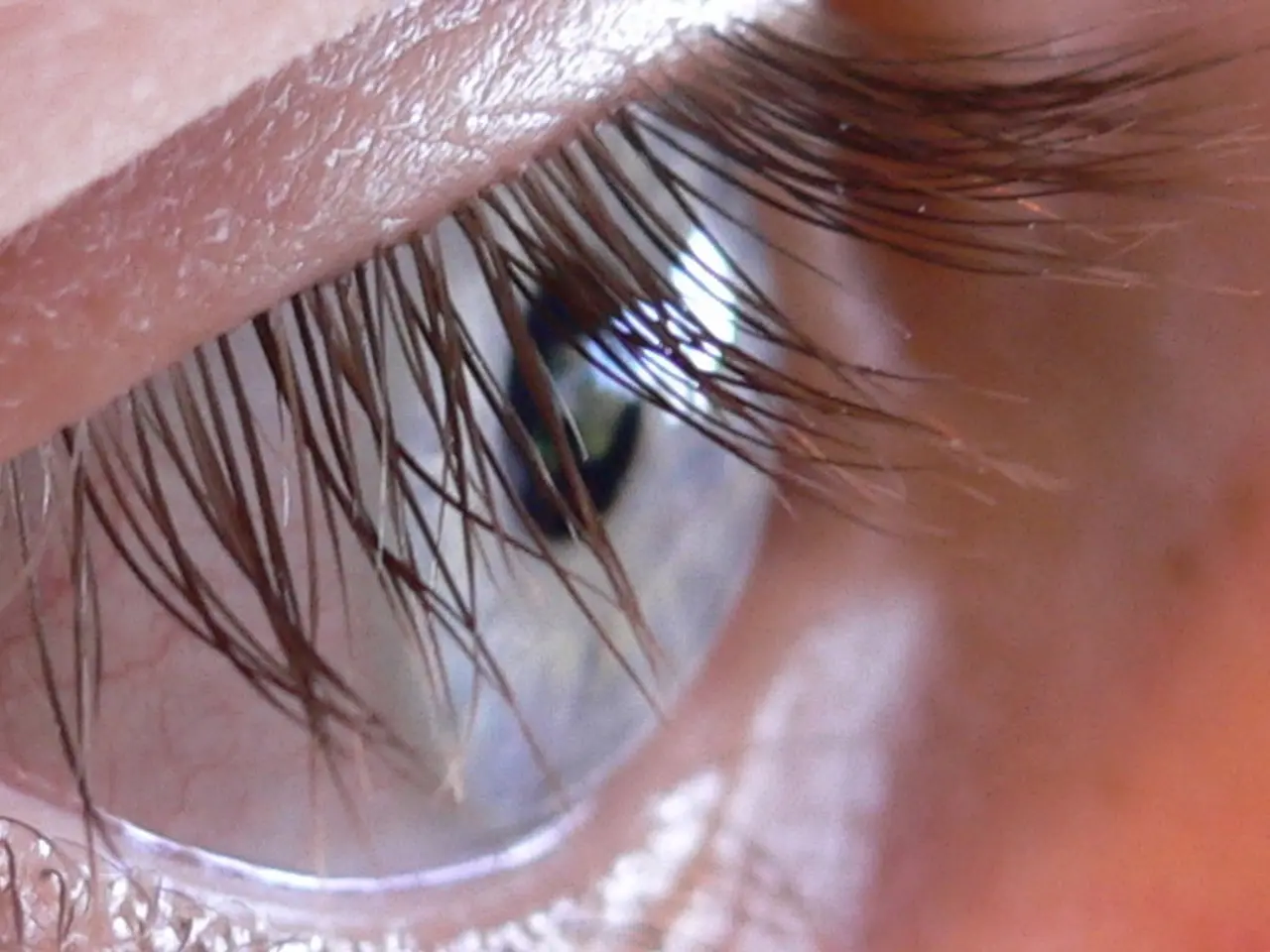Duration of Eye Pupil Dilation Recovery
In the course of a routine eye examination, the optician may dilate your pupils to get a clearer view of the inner structures of your eye. This process, which typically lasts for about 4 to 6 hours on average, can cause temporary side effects such as increased light sensitivity and difficulty focusing on close objects[1].
The duration of these effects can vary from person to person, with several factors influencing the intensity and length of the symptoms.
1. Individual Sensitivity: Some people may be more sensitive to the effects of dilation, such as increased light sensitivity or blurry vision, which can influence how they perceive the duration of these effects[1].
2. Type of Dilation Method: The method used to dilate the pupils (e.g., the type of drops) can affect how long the dilation lasts. However, most clinical dilations last similarly[1].
3. Overall Eye Health: Pre-existing eye conditions might affect how quickly the pupils return to normal size after dilation. However, this is more about the overall health of the eye rather than the dilation duration itself[1].
During a dilated eye exam, the optician may perform various tests, including a pupil response test, eye muscle function test, visual acuity test, visual field test, and tonometry test[1]. In some cases, a person might experience a temporary condition called cycloplegia, which is paralysis of the eye muscle that allows a person to focus[1].
Certain preexisting eye conditions, such as a lazy eye, glaucoma, and cataracts, can affect a person's vision during and after eye dilation[1]. If you are concerned about the effects of eye dilation, it's essential to discuss this with your eye doctor.
For younger children, the eyes may remain dilated for 24 hours or longer due to a strong focus mechanism in the eye[1]. To protect light-sensitive eyes after an eye exam, wearing sunglasses is recommended. In rare cases, a person may experience an allergic reaction to the eye dilation drops, resulting in red and swollen eyes, dry mouth, facial flushing, fever, or rapid pulse[1].
In conclusion, understanding the effects and duration of eye dilation is crucial for preparing for and recovering from an eye examination. Consult your eye doctor if you have any concerns, and remember that wearing sunglasses can help protect your light-sensitive eyes after the exam.
[1] Information sourced from the American Optometric Association and the National Eye Institute.
- Not only can increased light sensitivity and difficulty focusing on close objects be experienced after eye dilation, but in some cases, a person may develop a temporary condition known as cycloplegia, which is the paralysis of the eye muscle that allows a person to focus.
- A dilated eye exam may reveal various eye conditions, such as a lazy eye, glaucoma, and cataracts, which can impact a person's vision during and after the dilation process.
- For those suffering from multiple eye conditions, the effects of eye dilation might last longer, necessitating talks with the eye doctor about potential concerns.
- In the realm of health-and-wellness, it's essential to remember that pre-existing eye conditions may also affect mental health, as depression often places a heavy burden on individuals with ongoing health concerns.
- Atopic dermatitis, eczema, and multiple crohns can co-occur with certain eye conditions, creating a complex interplay of symptoms that require careful monitoring from healthcare providers, including dermatologists and gastroenterologists.
- While the dilation process does not directly contribute to lung disease or COPD, it can induce temporary side effects, making it challenging for individuals with lung disease to breathe or manage their symptoms.
- In rare instances, a severe allergic reaction to the dilation drops can occur, leading to a variety of symptoms that resemble those of cancer, including swollen eyes, dry mouth, facial flushing, fever, and rapid pulse.
- Advancements in science are making it increasingly possible to develop predictive models for various health conditions, potentially paving the way for early detection and improved treatment options for diseases like aq sclerosis, COPD, and even mental health concerns like depression.




